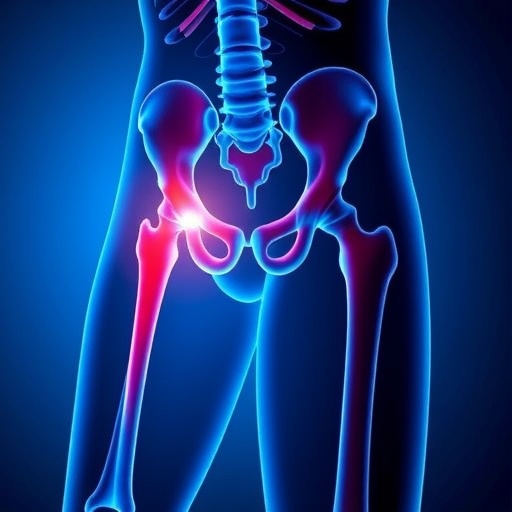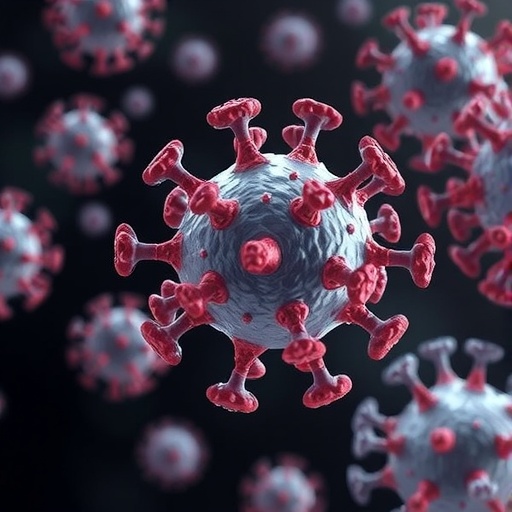
In recent years, forensic odontology has emerged as a crucial domain within forensic science, offering unique insights into individual identification, age estimation, and even the determination of perinatal events. Among the various diagnostic markers studied in this field, the neonatal line (NL), a microscopic feature observed in tooth enamel and dentin, has been frequently proposed as a potential indicator to distinguish between stillbirths and live births. However, groundbreaking systematic research conducted by Borah, Angadi, and Kale casts substantial doubt on the reliability of the neonatal line as a forensic tool for confirming live birth, challenging long-held assumptions and prompting a reevaluation of methodological approaches in perinatal forensic investigations.
The neonatal line manifests as a histological demarcation in dental hard tissues, marking the physiological stress experienced during the birth process. Traditionally, this incremental line is thought to reflect the metabolic shift occurring at birth when neonates shift from intrauterine to extrauterine environments. Due to its unique timing, many forensic odontologists have hypothesized that detecting the neonatal line could serve as unequivocal evidence of live birth. Such differentiation bears immense medico-legal and ethical importance, especially in cases of suspected infanticide, stillbirth classification, and age estimation during forensic examinations.
Despite the intuitive appeal of the neonatal line as a biomarker for live birth, Borah and colleagues undertook a rigorous systematic review to scrutinize the existing body of scientific literature assessing this premise. Their investigation synthesized data from multiple studies that have evaluated the presence, formation, and variability of the neonatal line in human teeth across a broad spectrum of populations and developmental contexts. The results indicate a glaring paucity of robust, reproducible evidence supporting the neonatal lineâs definitive application in forensic casework related to live birth confirmation.
One critical insight uncovered in this review is that the neonatal lineâs visibility and characteristics are influenced by various biological and environmental factors beyond live birth alone. Tooth mineralization dynamics, gestational age at birth, prenatal health conditions, and postnatal survival duration all play significant roles in modulating NL formation. Consequently, the presence or absence of the neonatal line cannot be reliably correlated with the neonateâs survival status at birth without considering such confounding variables. This multifactorial influence undermines the neonatal lineâs specificity, reducing its forensic utility in isolating live birth from stillbirth or miscarriage cases.
Moreover, the methodological heterogeneity across studies assessing the neonatal line further complicates the interpretation of findings. Variations in histological preparation techniques, microscopic analysis protocols, and criteria used to identify the neonatal line have led to inconsistent results. Some studies report clear and discernible neonatal lines even in stillbirth cases, while others observe absent or indistinct lines in infants who lived beyond birth. The lack of standardized, reproducible protocols diminishes confidence in the neonatal line as a forensic marker and highlights the urgent need for methodological harmonization within the research community.
From a technical perspective, detecting the neonatal line involves preparing thin sections of deciduous or permanent teeth and examining them under polarized light or scanning electron microscopy. This process requires meticulous sample procurement and preparation, often complicated by postmortem tissue degradation, which can obscure microscopic features. Furthermore, variations in enamel thickness and mineral content across different teeth present additional challenges in consistently visualizing and interpreting the neonatal line. Such practical limitations emphasize the importance of corroborating neonatal line findings with other forensic evidence rather than relying on it as a solitary determinant.
The implications of Borah and colleaguesâ findings are profound for forensic practice and research. They caution against overreliance on the neonatal line in medico-legal investigations aiming to establish live birth status, suggesting that current evidence does not justify its standalone use as a definitive marker. This stance advocates for a multidisciplinary approach incorporating clinical history, autopsy findings, biochemical analyses, and other histological markers to build a comprehensive assessment of perinatal survival.
Furthermore, their review encourages innovation in identifying alternative or complementary biomarkers that could reliably distinguish live births from stillbirths. Advances in molecular biology, proteomic profiling, and imaging technologies may hold promise for uncovering novel forensic indicators that overcome the limitations encountered with the neonatal line. Collaborative research integrating forensic odontology with neonatal pathology and developmental biology could accelerate breakthroughs in this challenging field.
The broader forensic and legal communities stand to benefit significantly from this reevaluation. Accurate determination of live birth versus stillbirth has serious ramifications in legal proceedings involving questions of homicide, neglect, or malpractice in perinatal settings. Misclassification based on tenuous markers like the neonatal line may lead to miscarriages of justice or hinder accountability. Thus, refining forensic criteria to rest on rigorously validated scientific foundations is paramount for ensuring ethical and judicial integrity.
In addition to forensic implications, the neonatal line fascinates developmental biologists and dental researchers interested in understanding enamel formation and systemic stress responses during early life. The systematic reviewâs findings underscore the complexity of interpreting enamel histology in the context of physiological and pathological events, emphasizing that enamel markers must be contextualized within an organismâs broader developmental narrative.
Importantly, this research also sheds light on the unique challenges inherent to studying perinatal tissues. The rapid morphological and biochemical changes occurring around birth, combined with the sensitivity of dental hard tissues to systemic conditions, present both opportunities and obstacles in forensic research. Improved sample preservation, imaging modalities, and analytical frameworks will be essential to advance knowledge in this domain.
The work by Borah and colleagues represents a pivotal moment encouraging forensic odontologists and practitioners to critically appraise existing tools and to pursue empirical validation rigorously. Their systematic review exemplifies how comprehensive evaluations of forensic markers can shape best practices and provoke paradigm shifts in how evidence is understood and applied in legal contexts.
In conclusion, while the neonatal line remains a captivating anatomical feature with potential forensic relevance, this exhaustive review establishes that the current evidence base is insufficient to endorse its use as a reliable indicator of live birth in forensic odontology. The intricacies of enamel biology, interindividual variability, and methodological inconsistencies demand caution and underscore the necessity for integrated approaches in medico-legal investigations of perinatal survival.
As forensic science continues to evolve amidst technological advancements and growing interdisciplinary collaboration, such critical assessments serve as beacons guiding ethical application and scientific rigor. The neonatal lineâs role is destined to be refined, contextualized, and perhaps complemented by newer diagnostic modalities, ensuring that justice and science proceed hand in hand in the fragile realm of perinatal forensic investigation.
Subject of Research: Forensic applicability of the neonatal line as evidence for live birth in forensic odontology
Article Title: Insufficient evidence for the applicability of the neonatal line as evidence for live birth in forensic odontology: a systematic review
Article References:
Borah, B., Angadi, P.V. & Kale, A. Insufficient evidence for the applicability of the neonatal line as evidence for live birth in forensic odontology: a systematic review. Int J Legal Med (2025). https://doi.org/10.1007/s00414-025-03596-x
Image Credits: AI Generated
Tags: age estimation in forensic caseschallenges in its reliabilitydental histology in live birth determinationdistinguishing live births from stillbirthsethical considerations in forensic examinationsforensic science advancementsimplications for perinatal forensic investigationsmedico-legal significance of neonatal lineneonatal line in forensic odontologyreassessment of forensic methodologiesrole of forensic odontology in identificationsystematic research on neonatal line




